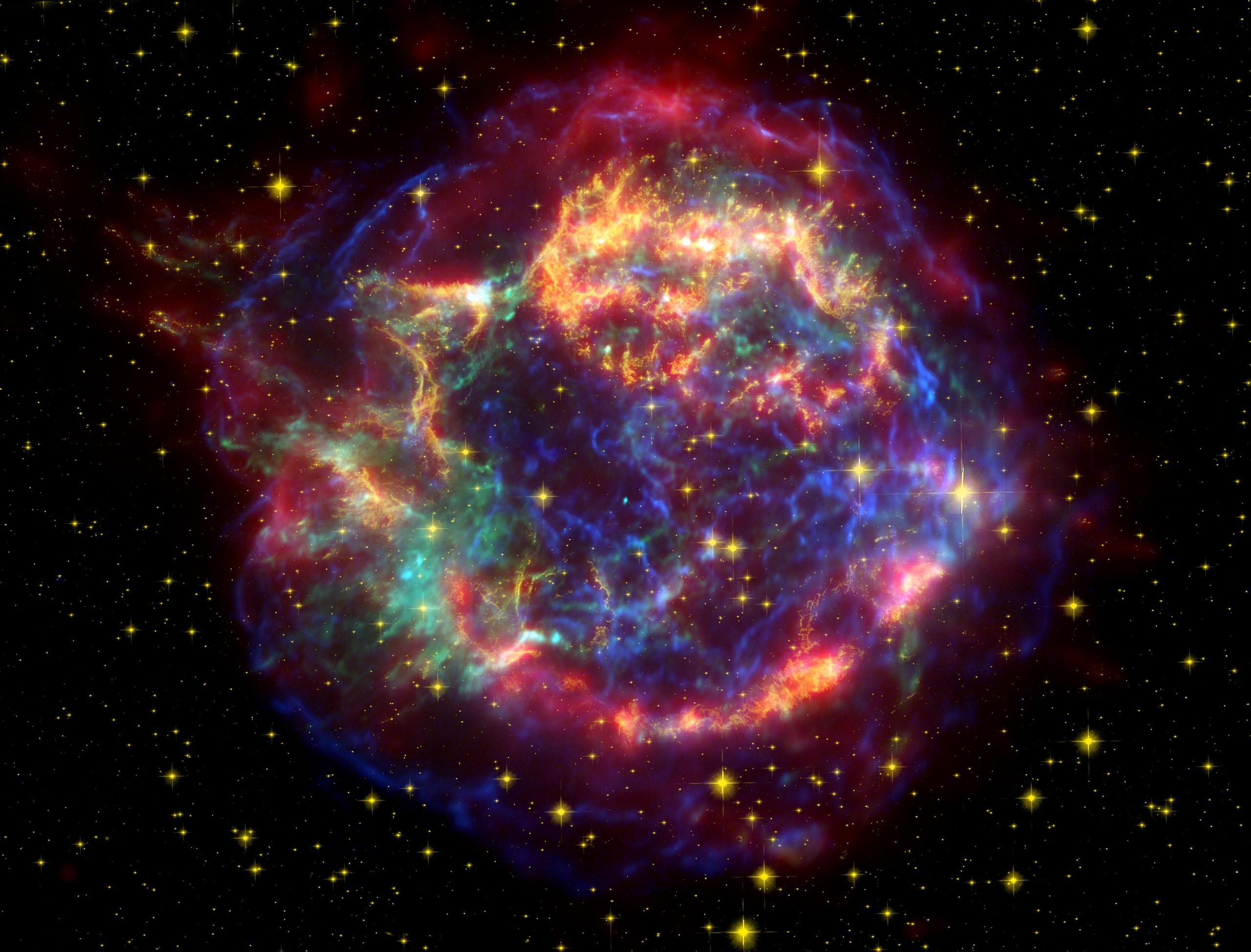Cassiopeia A is the expanding remainder of a massive star that exploded 340 years ago in he constellation of Cassiopeia (hence we call it Cas A for short). As the star erupted, hot radioactive material was shot out in all directions, churning up the surrounding outer debris, before the star finally tore itself apart. Simulations of supernova explosions have found it difficult to model the extreme conditions during this process, even when using the world’s best supercomputers. So what are astronomers missing?
By studying recent supernovae like Cas A, astronomers can study the processes that formed these massive expanding shock waves, leading to a deeper understanding of the explosions that shaped them.

Astronomers from the Harvard-Smithsonian Centre for Astrophysics and Dartmouth College have developed a three dimensional map of the supernova remnant Cas A using a technique that is an analogue of a CAT scan.
“Our three-dimensional map is a rare look at the insides of an exploded star,” says Dan Milisavljevic of the Harvard-Smithsonian Center for Astrophysics (CfA). This research is being published in the Jan. 30 issue of the journal Science.
The team used the Mayall 4m telescope at Kitt Peak in Arizona to study the remnant in near-infrared wavelengths. By using spectroscopy, they were able to determine the expansion velocities of very dim material within the interior of Cas A, giving them the third dimension in their 3-D map.

The near-infrared observations also reveal the presence of Sulphur, and combining this data with optical and X-ray observations the astronomers were able to make a complete map of the remnant. By looking at the rapidly ejected material at the outer edges of Cas A, they were able to extrapolate the velocity vectors to give a point of origin for the original star, showing how parts of the shock front have expanded faster than others, giving it a less than spherical shape.
Their findings indicate that Cas A is made up of a series of cavities, similar to massive bubbles, and that the pattern of the material in the interior is consistent with the bright rings of debris that give the expanding shell its distinct shape.
“We’re sort of like bomb squad investigators. We examine the debris to learn what blew up and how it blew up,” explains Milisavljevic. “Our study represents a major step forward in our understanding of how stars actually explode.”
Check out the 3D map they came up with – It’s really impressive.
